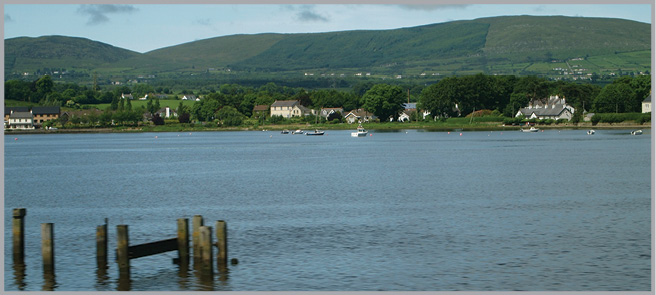Muddied waters


Nearly a century after partition and the secession of Northern Ireland from the Irish Free State, a territorial dispute between Britain and Ireland lingers on.
One hangover of the partition of Ireland which has occasionally served to re-enter the public discourse over the decades is the disputed status of Lough Foyle. The lough, an estuary of the River Foyle, lies between the counties of Derry and Donegal. Following the handover of Lough Swilly to the Irish Free State in 1938, the natural harbour created by Lough Foyle has been regarded as having a strategic significance for the British Government.
The Government of Ireland Act (1920) defined the respective land territories of Northern and Southern Ireland, yet it failed to explicitly outline territorial waters.
In this pre-Anglo-Irish Treaty era, the Act was intended to establish two Home Rule entities on the island which, as a whole, would remain within the United Kingdom and so territorial waters did not enter into the legislative process. Due to the War of Independence, the Act was never applied to Southern Ireland. However, after the signing of the Treaty and the subsequent secession of Northern Ireland from the Irish Free State, the issue remained unresolved.
The ensuing case made by successive Irish governments alludes to the fact that the Northern Ireland Parliament, established in 1921, had zero control over its surrounding waters. As such, these waters continued to belong to the portion of Ireland which remained within the Free State. The uncertainty surrounding the issue persisted when, in 1925, the Boundary Commission failed to determine whether the historic counties were coterminous with the parliamentary counties recognised in the 1920 Act. The British Government stated that it was not in a position to express a view. Consequently, temporary arrangements were established to ensure that fishermen would pay for a fishing licence, while the issue of ownership was fudged.
During a Dáil debate in 1972, then Taoiseach Jack Lynch articulated: “We claim that the territorial waters around the whole island of Ireland are ours… The Northern Ireland which withdrew from the Irish Free State is identical with the Northern Ireland defined in the Government of Ireland Act, 1920, and defined as consisting of name counties and boroughs. It is, I think, common case between us that in English law the counties do not include adjacent territorial waters and, therefore, according to our claim these territorial waters were retained by the Irish Free State.”
While the full claim to territorial waters is largely uncontested today, as recently as 2005 the British Secretary of State for Foreign and Commonwealth Affairs acknowledged the politically disputed status of Lough Foyle.
Under the Good Friday Agreement, the Loughs Agency was established as a cross-border body to conserve, manage and promote the development of the marine resources in the Foyle and Carlingford regions. The Agency has consistently appealed for a resolution to the territorial dispute around Lough Foyle in order to facilitate the development of the lough’s full potential.
Responding to a written question from an opposition MP, Secretary of State for Northern Ireland James Brokenshire outlined: “The Government’s position remains that the whole of Lough Foyle is within the UK.”
A spokesman for the Northern Ireland Office elaborated: “The UK maintains its formal claim to the whole of Lough Foyle, based on a 1662 charter of Charles II, which granted the waters and bed (as well as the fisheries) of Lough Foyle to the Irish Society, and included them as part of County Londonderry.”
Addressing the Seanad, Irish Minister of State at the Department of Justice and Equality, David Stanton, unambiguously asserted: “The Government’s approach has been clear, consistent and constructive. The UK Government’s assertion that it has jurisdiction over the whole of Lough Foyle is rejected and has never been accepted by any Irish Government.”
He also noted: “Uncertainty concerning the extent to which each side exercises jurisdiction within Lough Foyle has created practical difficulties for the conduct of a number of activities there… The Government wishes to see the Loughs Agency working to its full potential, which is in the interests of everyone on this island.”
The optimal utilisation of the lough in terms of aquaculture and mariculture has the potential to inject a welcome boost for the local economies on both shores of the lough. However, until the territorial dispute is resolved, major investment projects are unlikely to emerge.
In 2011, diplomatic negotiations between the British and Irish governments were initiated in an attempt to “address and resolve jurisdictional issues relating to both Lough Foyle and Carlingford Lough”. These discussions have continued, though, in spite of a renewed impetus provoked by the Brexit referendum, the Irish Department of Foreign Affairs and Trade does not envisage that the associated complexities will impinge on upon Brexit negotiations.





